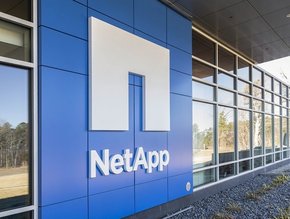Don’t underestimate collaboration when scaling automation

Robotic Process Automation (RPA) is the fastest growing segment of the global enterprise software market. In fact, Deloitte suggests that 72% of organisations will have begun their RPA journey by 2022. And according to a forecast last year by the World Economic Forum last year, automation will lead to a gain of 12 million jobs by 2025. It’s clear the technology is booming. As it does so, it’s important to consider how to achieve the best outcomes through collaboration.
Early-stage automation projects can get off the ground with the work of just one or two champions. These specialists create and deploy simple software robots designed to provide a ‘wow effect’ to stakeholders. Once buy-in is secured and the low-hanging fruit automations are picked, the scaling can begin.
At this stage, these champions will often be established as a centre of excellence (CoE). The aim is to help steer the automation program, house RPA expertise and bring in senior executive support from across the business to identify suitable processes.
However, it cannot fall to either a few specialists, a CoE, business unit, or the IT team to manage the entire roll-out in isolation. It’s vital cross-functional working takes place. According to research from McKinsey, companies that coordinate across business functions are almost three times more likely to succeed with their automation program.
Furthermore, as Paula McKillen, Head of Automation and RPA, Electrocomponents plc puts it, “You can do a lot of work in your CoE but you will not be able to deploy your robots without the strong partnership from IT colleagues.”
This is because automation will begin to touch many processes, applications and data sources owned by IT as it grows throughout the organisation. In addition, the more complicated automations become, the more IT advice and governance will be required to ensure they’re effective.
Collaborating with IT is essential and it can pay real dividends. IT is a natural testing and deployment ground, and the department owns certain specialist skills that other business functions lack. Wherein other employees can provide valuable in-depth insight to help build automations, IT can ensure the automations are efficiently and securely deployed across the enterprise.
There are five key areas where IT can provide support: preparing business infrastructure, assisting with complex builds, providing quality assurance, safeguarding security and ensuring the budget is there to make it all happen. Let’s consider each of these one by one.
Infrastructure
The environment in which your automations operate must be primed to host the technology. If your IT infrastructure isn’t compatible with your chosen automation platform, it may be difficult to achieve high levels of performance, stability and scalability. As the IT team is responsible for the underlying infrastructure, its involvement is key.
Of course, this will require a certain level of training to fully understand how to optimise the infrastructure for automation. Once up to speed on the specifics, IT teams possess the knowledge to implement these changes, laying the best foundation for success. As automations are deployed, IT teams will often retain ownership of components of the automation platform, such as the hardware, operating system and the databases. When provisioning operations and support for automations, IT teams may be called upon to maintain this infrastructure as required.
Creating and maintaining sound infrastructure allows for more stable and reliable automations, and consequently a higher level of performance. This is likely to incite greater confidence in the power of automation around the businesses, encouraging more employees to get on board – another key factor to consider when scaling automation.
Design
Simple automations require very little coding expertise. Low-code and no-code platforms allow business users from all departments to create and deploy their own automations. However, when it comes to more complex enterprise automations, IT teams will need to be on hand.
Automation is a team sport. Business users can get the ball rolling on complex designs, but IT specialisms may be needed to push the automations over the line. The code configurability, performance and testing skills already possessed by IT departments are often key to ensuring complex automations are designed to best serve the needs of the business.
This isn’t necessary for every automation and it’s important to retain a level of flexibility and agility within development. However, IT teams need to be brought in to ensure that every process that can benefit from automation is considered.
Quality
Once the infrastructure is primed and the automations are designed, IT plays an important role in quality control. In order to effectively scale RPA, you need to be confident that software robots will perform as expected.
Building quality assurance into automation development and importantly, throughout deployment, ensures it can stand the test of time. IT teams will often own the applications in which automations operate, and they can generate reports on how the business is benefiting from the technology.
While system changes may be intuitive for human colleagues, software robots need guidance. IT has a full view of upgrade and maintenance schedules and must work closely with automation teams to ensure any changes are easily adapted so that software robots can continue performing as intended.
Security
When processing sensitive data, it makes no difference which employee is completing the task – the same security standards must apply. Software robots are no exception. Most automations will need access to business-critical systems and sensitive data to complete enterprise-wide tasks, and as a result, security and compliance remain essential.
IT must be involved when building automations so that access systems does not compromise security. As more and more employees join the automation journey, this only becomes more important. Employees will create and deploy their own automations—they become citizen developers—so security best practices must be upheld.
Budget
In order to achieve automation at scale, the resources need to be available. Importantly, you don’t want your automation and IT teams battling for budget. Having both teams collaborate on budget and resourcing cycles leads to more logical and efficient financing decisions. Also, sharing expertise on potential costs will help to avoid any unwelcome surprises. For example, automation teams may not be aware of certain licensing implications when creating automations for certain software. Utilising IT knowledge in these areas can help you to better plan your resources and scale with efficiency.
Automation experts can provide the necessary expertise to run automations throughout the lifecycle. Employees across the business can provide in-depth insights into processes and build their own automations using low-code platforms, while IT provides testing, version control, deployment, maintenance and support.
While scaling automation certainly isn’t just an IT project, without IT’s support you might miss the mark. It is very rare that an organisation will have a dedicated automation IT team and as such, careful consideration must go into how to collaborate with IT – and other departments – to ensure success.






